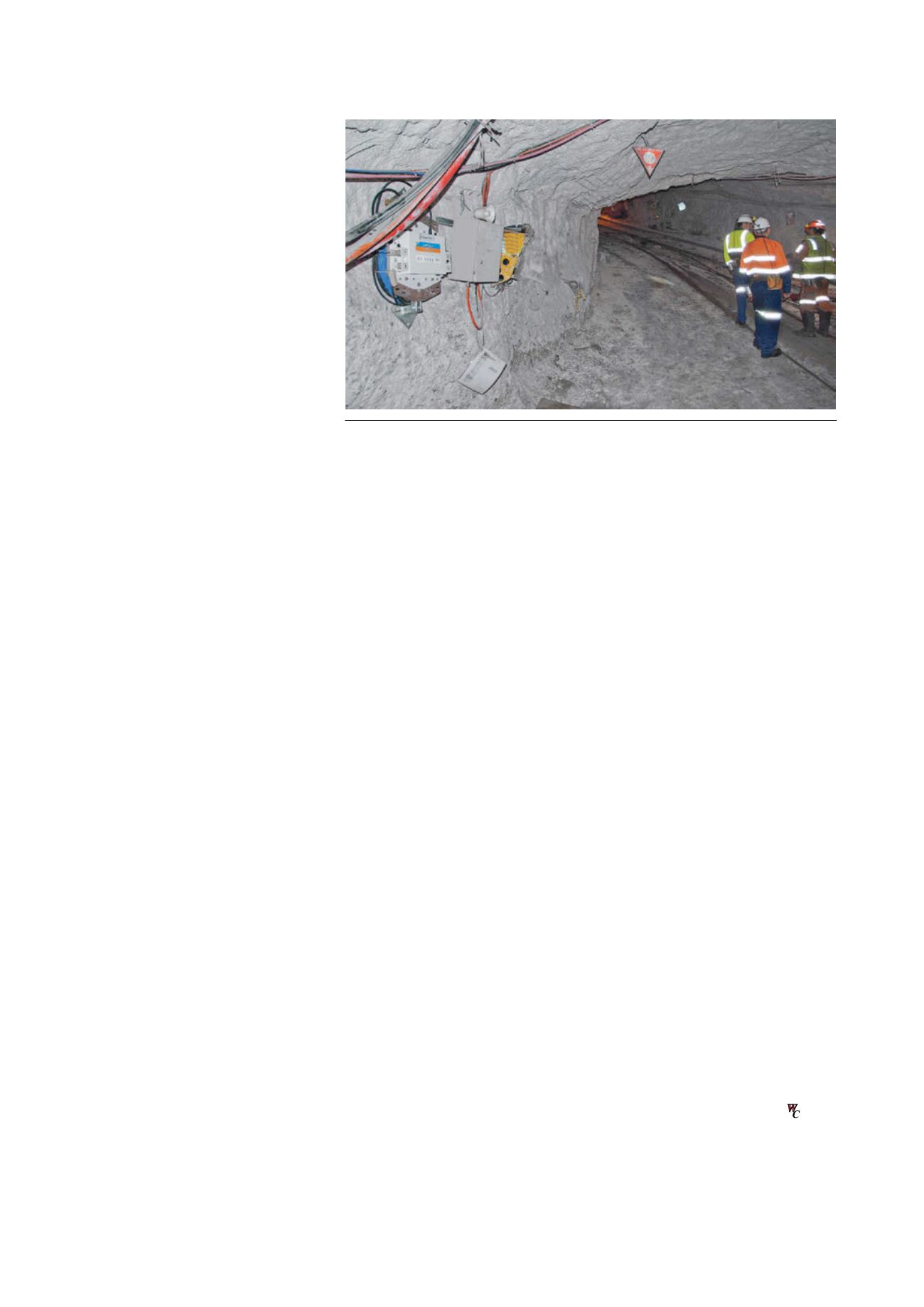
connectivity within the mine. Where
the network has been set up for data, be
it RFID tracking, video, system data,
longwall diagnostics, etc., it also
delivers mobile two-way, voice
communications throughout the mine.
Some examples MST has experienced
may sound trivial to someone outside
the mining industry, but the ability to
communicate from one remote location
(e.g. underground) to another remote
location (e.g. the surface stores area or
even an OEM’s overseas‑based service
expert) can make a significant
difference to many routine and
non-routine tasks.
Case studies
Specific examples of this day‑to‑day
functionality include the following two
cases.
Case study one
The first example is where the longwall
has stopped due to an issue on one of
the powered roof supports (PRS)
halfway along the wall. The part
required was available on a spare PRS
on the surface, but it was not a common
part and required specific details about
what part, where it was and how to
remove it.
In the past, this would have required
the mechanic/fitter on the face to walk
back and forth to a fixed phone to
describe to the surface control room
operator what was required. This
operator would then relay that
information to the surface engineer, or
even have to go to the surface himself
to ensure the correct part was sourced.
But, with the entire longwall face in
Wi-Fi coverage – because of video and
shearer diagnostic requirements – plus
Wi-Fi coverage at the surface stores
yard, the fitter just stood at the PRS on
the face and used his VoIP MinePhone
to talk directly with the fitter in the
store yard who was standing looking at
the spare PRS. The underground fitter
was able to talk him through the
location and removal procedure.
Feedback from management stated
it sped up the whole process by at least
one to two hours on a high‑production
longwall that delivered significant cost
savings by reducing downtime.
Without a good Wi-Fi network in the
mine, this type of ‘side benefit’ is a
missed opportunity and in this case
US$50 000 of extra coal production
might have been lost.
Case study two
The second example again
demonstrates how the functionality of
the network and MinePhones can
streamline tasks. A tear in a conveyor
belt is a serious threat to production
and the quicker a repair is made, the
quicker coal starts flowing. At one
mine, the tear required two crews
working in widely separated parts of
the belt road to carefully coordinate
their activities. Direct communication
using the MinePhones was obviously
going to help, but what really made the
difference was the use of the
push-to-talk (PTT) functionality of the
MP70 MinePhones that allowed all
twelve members of both crews to be
listening to what was happening and
coordinate their efforts.
PTT was vital as dialling numbers
and direct calling would not allow the
coordination and trying to coordinate
such activates with text messaging, not
to mention the time to even enter texts,
was just not practical.
This is a simple functionality but the
cumulative results of improvements to
many of these types of activities
minimises downtime. As discussed in
the April issue article,
1
and with mines,
such as Moranbah North, focused on
short interval control, it is these
cumulative events that minimise the
deviations from plan and ensure
production is maintained at the lowest
cost.
The use of an open protocol system,
such as Wi-Fi, has seen Moranbah
North beginning to use tablets
underground to allow reporting and
updates to their management system
by personnel on the spot, thus
eliminating the delays and inaccuracies
often associated with a paper based
systems.
Conclusion
So whether it is minimising downtime,
getting processes back in line with plan
or streaming high level data back to
sophisticated analytics applications on
the other side of the world, good
connectivity is mission critical to
making it happen.
Finally and as discussed
previously,
1
the technology provides
the platform to realise these benefits,
but it still requires good people and
good management to use the platform
well and take advantage of the value it
offers.
A good team of operators is still the
fundamental requirement for these
mines to succeed, and a good
communications network underground
connects personnel, processes and
equipment in real-time to ensure safe,
productive mining in real time.
Reference
1. KENT, D., “Staying Connected”,
World
Coal,
Vol. 25 No. 4 (April 2015), pp. 23 – 26.
Strategically placed NS40 APs ensure continuous signal coverage where required.
June 2016
|
World Coal
|
47


